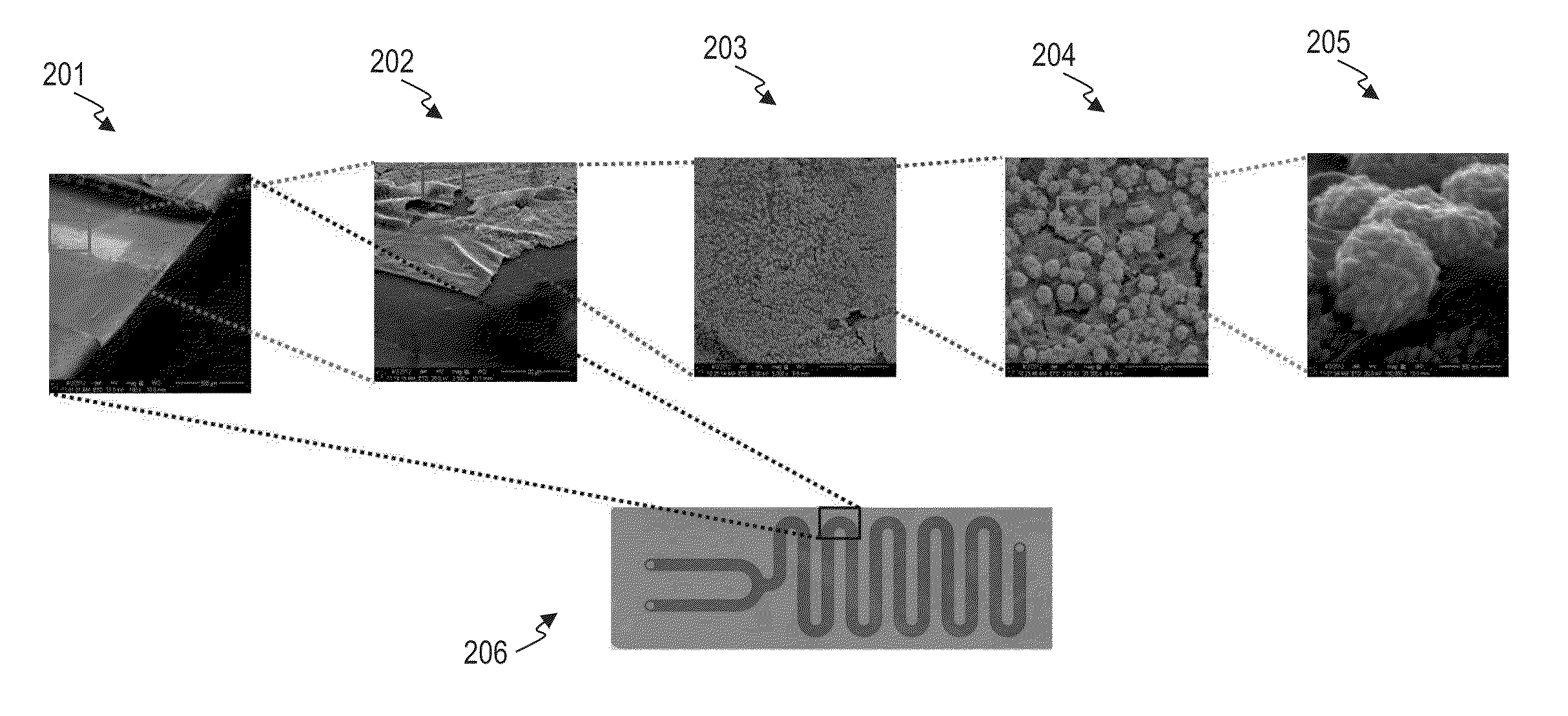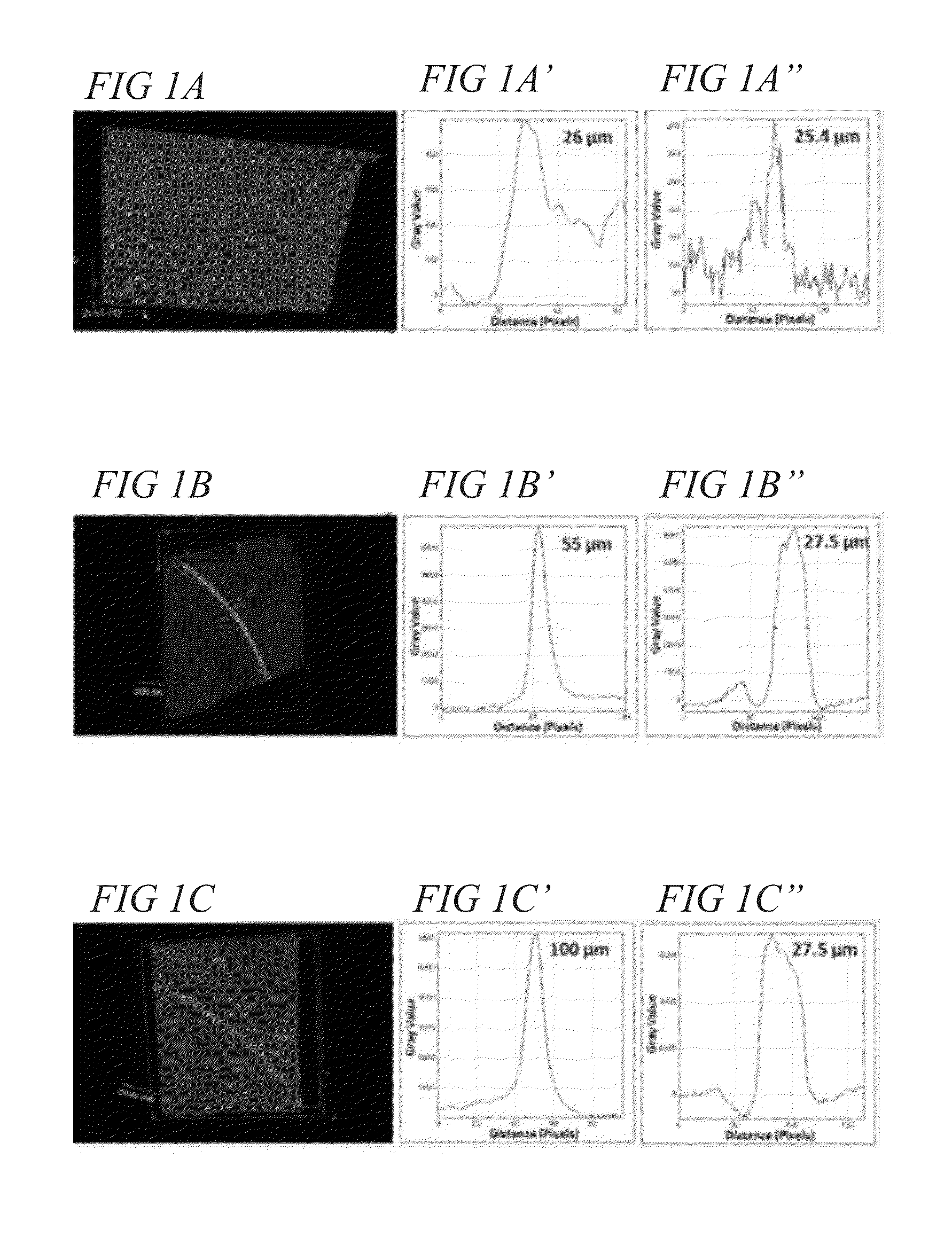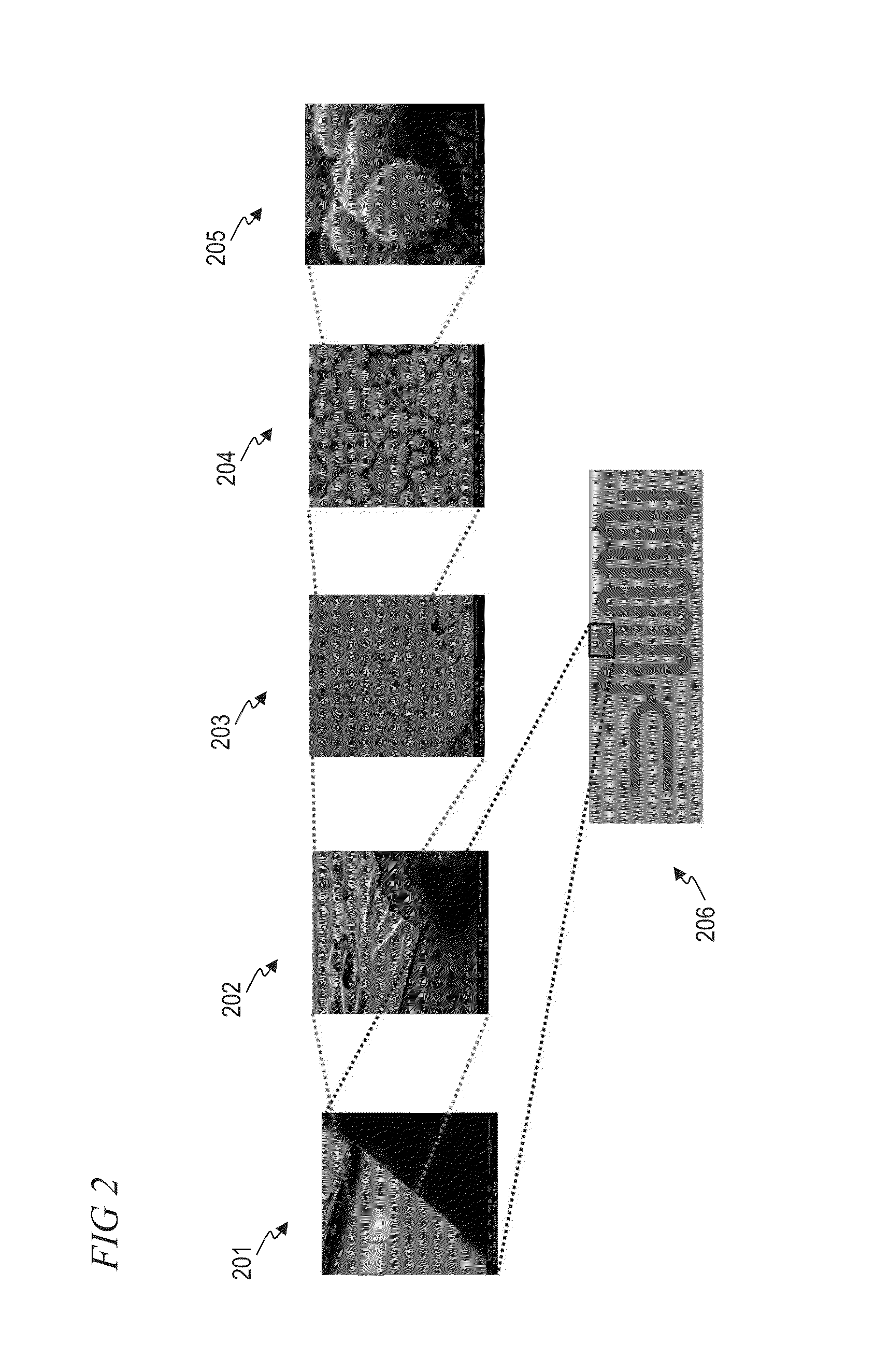Fluidic channel coated with metal catalysts and devices and methods relating thereto
a technology of metal catalysts and fluidic channels, applied in physical/chemical process catalysts, metal/metal-oxide/metal-hydroxide catalysts, laboratory glassware, etc., can solve the problems of inability to obtain high quality, coating fluidic channels, etc., and achieve the effect of enhancing catalytic activity
- Summary
- Abstract
- Description
- Claims
- Application Information
AI Technical Summary
Benefits of technology
Problems solved by technology
Method used
Image
Examples
example 1
Catalyst Coating Method: Time Dependent Formation of Gold Nanostructures
[0140]Millifluidic chips (made of polyester terephthalate polymer) were purchased from Microplumbers Microsciences LLC. The chip had serpentine channels with dimensions of 2 mm (W)×0.15 mm (H)×220 mm (L) within which the experiments were performed. High precision, fully automated, pulsation free syringe pumps to flow the liquids within the chip were purchased from Cetoni Automation and Microsystems, GmbH. Fluidic connections between the reactor chip and the pump were made using FEP tubing (0.25 mm I.D., 1 / 16″ O.D., Dolomite). The pumps were tested with water as solvent at different flow rates prior to the experiment to optimize the required flow rate. HAuCl4 (Aldrich, 99.9%), meso-2, 3-dimercaptosuccinic acid (DMSA, Aldrich, 98%), NaBH4 (Aldrich, 98%), and Nanopure water (18.2 MΩ-cm) was used in all experiments (Examples 1 and 2).
[0141]A Standard solution of gold chloride (10 mM) was prepared by dissolving 118.2...
example 2
Catalytic Reaction in a Catalyst Coated Flow Channel
[0154]15 mL of 9×10−2 mM solution of 4-nitrophenol was mixed with 3.3 mL of 0.65 M NaBH4 solution to form phenolate ions. This resultant solution was passed through the prepared gold catalyst coated within the flow channels (as described in Example 1) and the product was collected, to complete the reduction of 4-nitrophenol to 4-aminophenol catalyzed by gold, as illustrated in Scheme 2.
[0155]
Two catalysis reactions, (1) 4-nitrophenol reduction to 4-aminophenol and (2) hexacyanoferrate (III) reduction to hexacyanoferrate (II) were performed with three sets of gold catalysts (i.e. structures formed at 1 h, 5 h and 9 h respectively). In a typical reaction, 15 ml of 9×10−5 mol solution of 4-nitrophenol was mixed with 3.3 ml of 0.65 mol NaBH4 solution to form 4-nitrophenolate ion according to reported literature procedure.31 The resultant solution was passed through the gold structures deposited chip at 5 ml / h flow rate (other flow-rate...
example 3
Synthesis of Ultrasmall Copper Nanoclusters (UCNCs) in a Millifluidic Reactor
[0159]Chemicals used in this experiment include: Copper(II) nitrate hydrate (99.999%), sodium borohydride (≧98.0%), Sodium hydroxide pellets (99.998%) and O-[2-(3-Mercaptopropionylamino)ethyl]-O′-methylpolyethylene glycol (Mw 5000) [MPEG], fumed silica, styrene (≧99.0%), tert-Butyl hydroperoxide solution—packed in PTFE bottles, ˜5.5 M in decane (over molecular sieve 4 Å), anhydrous acetonitrile, methanol were obtained from Sigma-Aldrich. All chemicals were used as received without further purification. Water was supplied by a Barnstead Water Purifier Nanopure water system (18.3 MΩ cm).
[0160]A millifluidic chip (made of polyester terephthalate polymer) was purchased from Microplumbers Microsciences LLC, which has serpentine channels with dimensions of 2 mm (W)×0.15 mm (H)×220 mm (L). Use FEP Tubing (purchased from Dolomite Centre) with dimensions of 0.25 mm I.D., 1 / 16″ O.D., for connecting the chip to the pu...
PUM
| Property | Measurement | Unit |
|---|---|---|
| width | aaaaa | aaaaa |
| diameters | aaaaa | aaaaa |
| width | aaaaa | aaaaa |
Abstract
Description
Claims
Application Information
 Login to View More
Login to View More - R&D
- Intellectual Property
- Life Sciences
- Materials
- Tech Scout
- Unparalleled Data Quality
- Higher Quality Content
- 60% Fewer Hallucinations
Browse by: Latest US Patents, China's latest patents, Technical Efficacy Thesaurus, Application Domain, Technology Topic, Popular Technical Reports.
© 2025 PatSnap. All rights reserved.Legal|Privacy policy|Modern Slavery Act Transparency Statement|Sitemap|About US| Contact US: help@patsnap.com



